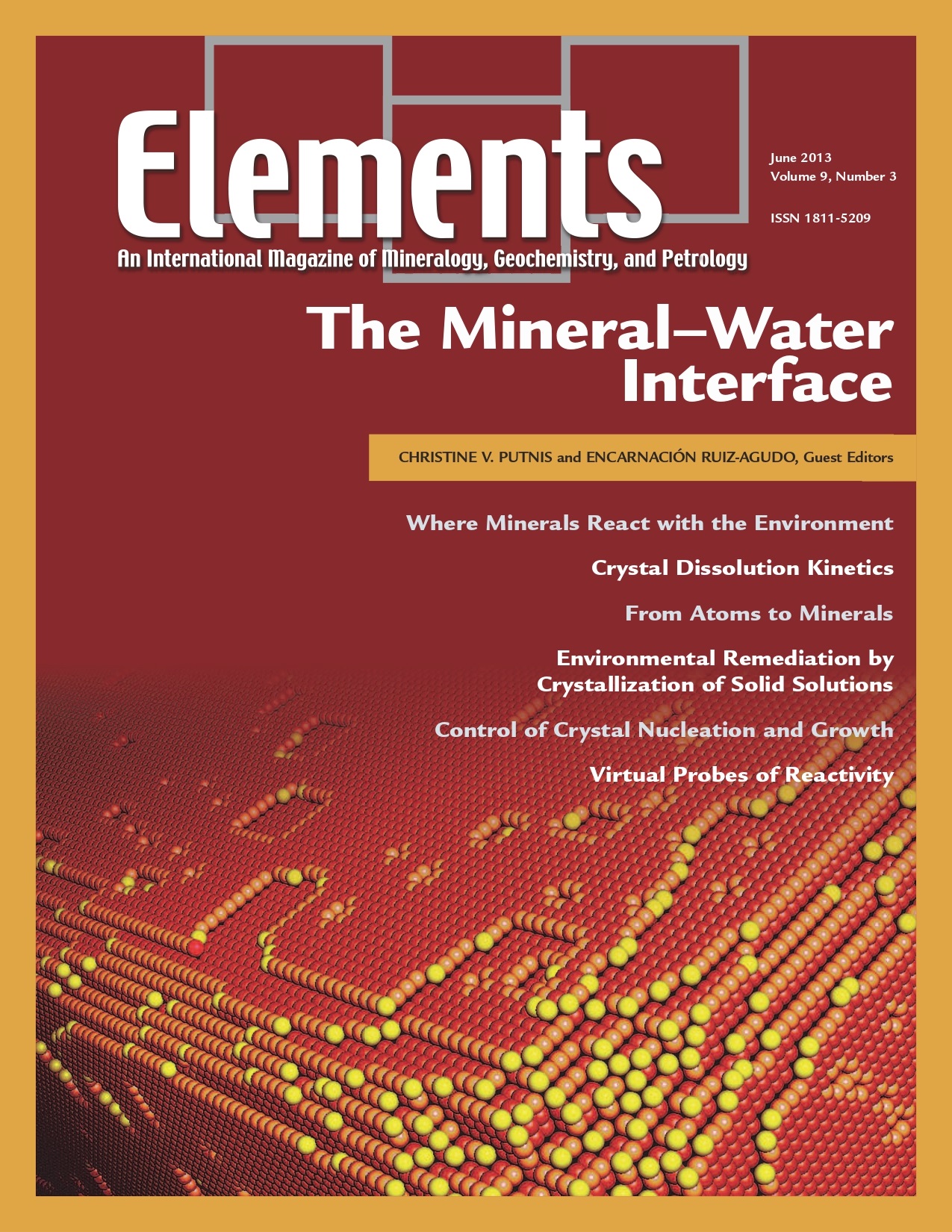
Granitic Pegmatites, August 2012, Vol. 8, No. 4
June 28, 2024
Kaolin, June 2014, Vol. 10, No. 3
June 28, 2024The Mineral–Water Interface, June 2013, Vol. 9, No. 3
$20.00
Reactions occurring at mineral–water interfaces are central to geochemical processes. They affect a wide range of important environmental issues, such as the composition of natural waters, weathering and soil formation, element cycling, biomineralization (including minor-element incorporation), acid mine drainage, and nuclear waste disposal.
The Mineral–Water Interface
June 2013, Vol. 9, No. 3
Reactions occurring at mineral–water interfaces are central to geochemical processes. They affect a wide range of important environmental issues, such as the composition of natural waters, weathering and soil formation, element cycling, biomineralization (including minor-element incorporation), acid mine drainage, and nuclear waste disposal. Recent studies using state-of-the-art spectroscopic and microscopic techniques have characterized the molecular structure of mineral surfaces, the distribution of fluids near surfaces, and dynamic processes such as dissolution, growth, and mineral replacement. These studies provide insights into the kinetics and mechanisms of reactions occurring at mineral surfaces, and they test the validity of predictions based on theory. These recent advances constitute the central theme of this issue of Elements. Modeling approaches used in mechanistic studies are also introduced. Such approaches complement direct, in situ, molecular-scale observations of processes occurring at mineral–water interfaces.
Why You’ll Love Elements Magazine:
- Expert Contributors: Articles written by renowned researchers in the field of geoscience.
- Engaging Content: Join a community of readers who are passionate about Elements.
- Exceptional Quality: Each issue is printed on high-quality paper with stunning visuals and detailed illustrations that bring complex scientific concepts to life.
Order your copy of the June 2013 issue of Elements magazine today and investigate the mineral-water interface.
Related products
-
Large Igneous Provinces: Origin And Environmental Consequences, December 2005, Vol. 1, No. 5
$20.00Large igneous provinces record major outpourings of igneous rocks, both on the continents and in ocean basins. Their origin is still vigorously disputed, with models invoking mantle plumes, thermal effects of the lithosphere, and meteorite impacts.
-
Phosphates And Global Sustainability, April 2008, Vol. 4, No. 2
$20.00Phosphorus is a unique element: it is essential to the existence of all living forms, and as such controls biological productivity in many terrestrial and marine environments; but when in excess, it leads to uncontrollable biological growth and water-quality problems. This has become a common environmental issue, resulting from our careless use of phosphorus in agriculture, yet phosphate ore deposits, from which fertilizers are produced, are a finite natural resource.
-
The Nuclear Fuel Cycle – Environmental Aspects, December 2006, Vol. 2, No. 6
$20.00Increasing concerns for the effects of global warming that result from rising greenhouse gas concentrations in the atmosphere have led to a reexamination, even enthusiasm, for nuclear power. Of all the current alternatives to fossil fuels, nuclear fission is the most important source of energy, accounting for 17 percent of the world’s electricity.




